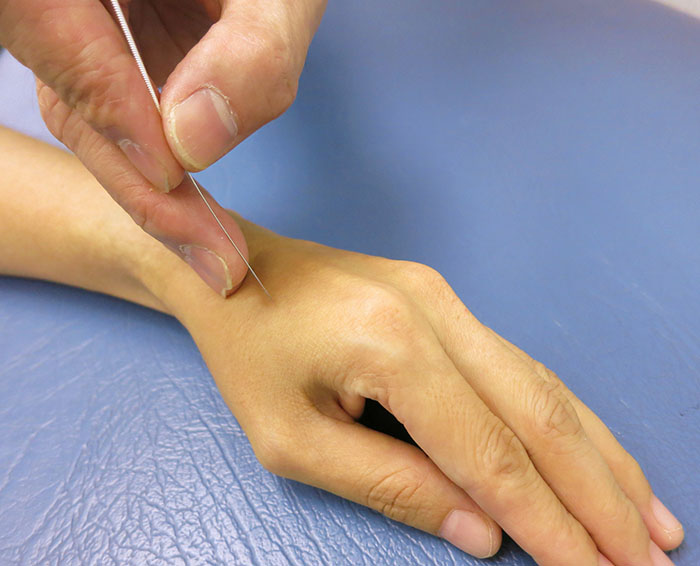

IMG 1411Clinically, acupuncture can bring instant pain relief. Conditions like neck pain, low back pain, shoulder pain, knee pain, ankle and wrist pain, soft tissue injury can be treated effectively by just one to three needles. For example, migraine is much reduced by just only one needle in the foot. Chronic dizziness can be resolved by 3 needles below elbow in few sessions.
Art of Acupuncture
Acupuncture is a collection of procedures involving penetration of skin with needles to stimulate certain points on the body. In its classical form it is a characteristic component of traditional Chinese Medicine (TCM), a form of alternative medicine, and one of the oldest healing practices in the world. Pain is left when there is a blockage of energy flow (Qi) in TCM view, resulting in Qi energy imbalance (Yin and Yang). Stimulating specific acupuncture points corrects the imbalance in the flow of energy Oi through channels kwon as meridians.
Acupuncture is well recognized by the World Health Organization (WHO), the United States National Institutes of Health and the National Health Service of the United Kingdom. There is general agreement the acupuncture is relatively safe when administered by qualified practioners using sterile needles and carries a very low risk of serious adverse effects.
According to the ancient Chinese literatures, the best way of conducting acupuncture is not a local application. They usually applied needles in the remote body parts. Rayson also do acupuncture in the similar way. He will apply needles on the left side when the painful area is on right side; meanwhile, the patient is instructed to move the painful parts in order to maximize the Qi energy flow, resulting in relief of pain.
The first one is the benign paroxysmal positional vertigo (BPPV). Patients have sudden onset of severe vertigo lasting for about 10 seconds on the change of posture, especially sitting to lying. Once the diagnosis is confirmed, manual therapy (Epley manoeuvre) is very effective in treating BPPV. Within 15-minute manoeuvre, the patient will be symptom free.
The second condition is called vestibular neuritis or dysfunction. The symptoms of dizziness, nausea or tinnitus occur after flu or infection of inner ear. The more frequent change of posture, the more dizziness the patient feels. Patients with vestibular neuritis are usually scared of change of positions, resulting in limited daily activities. This will result in poor recovery. There is strong research evidence that vestibular exercises do have great efficacy in treating patients with vestibular neuritis. With 3 weeks of exercises, patients will feel a marked progress in the relief of dizziness. The key of success is daily exercises with intentionally tolerable symptom.
The third condition is Meniere’s disease which takes longer time for vestibular exercises to be effective.




















